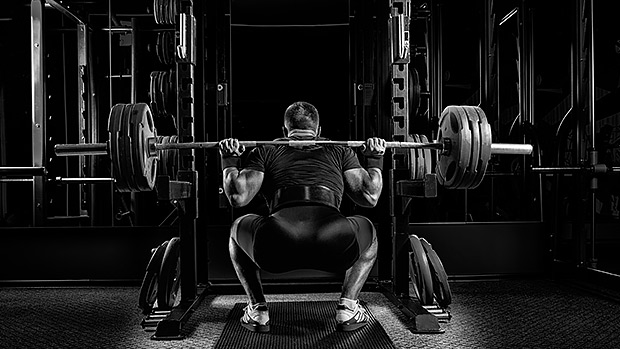Flexibility with Control
Mobility is the body's ability to actively move our joints through their intended ranges of motion. Put (very) simply, it's flexibility with control. Aside from the obvious benefits, like feeling better and recovering better, you should do it because your range of motion will increase.
Here's the kicker: Your lack of mobility is causing your lack of gains. More range of motion means more time under tension.
With better mobility, your muscles will be working through greater eccentric and concentric phases. A muscle worked through its full range of motion is going to have a greater opportunity to break down and rebuild stronger than a muscle that's only working through half of its range of motion.
To achieve optimal squat depth (femur at least parallel with the floor), you'll need mobility in three major areas:
- Ankles
- Hips
- Thoracic spine/shoulders
Here's an example of good squat depth:
Dorsiflexion is your ankle's ability to bend – think bringing your toes back towards your shin.
You need mobility in the ankles to hit squat depth because you need to keep your feet "rooted" to the floor as you squat down (heels down). Otherwise, your heels are going to raise off the floor and your knees will push forward excessively. Goodbye glute gains, hello patellar tendonitis.
Tip: You'll see that I'm wearing shoes in the videos (gym rules), but I recommend ditching them if possible when working on your ankle mobility.
1. Elevated Banded Dorsiflexion
Loop a mobility band around the squat rig at knee height with a box or bench in front of you. Have the band looped around the front instep of your foot with the same foot up on the box.
Push your knee forward as far as you can while maintaining a flat foot (heel must not come up).
Hold for 1-2 minutes per side.
2. Active Banded Dorsiflexion (2 Drills)
Have a band looped around the bottom of a squat rig with a box or bench in front of you.
For the first drill – Loop the band around the front instep of your foot, standing with your other foot slightly in front of you. Then do active ankle bends for 30-60 seconds by pushing your knee forward and back while maintaining a flat foot.
For the second drill – Loop the band around the front instep of your foot and do a reverse lunge with the opposite leg. As you lunge down, push your front knee forward past your toes while maintaining a flat foot.
Do 10-15 each side.
Try this quick hip opener sequence before and after lower-body workouts:
If you're using this routine as part of your warm-up, cut the recommended times shown in the video in half and do some soft tissue work beforehand (like foam rolling).
Otherwise, follow the recommended times shown in the vid for your post-training cooldown and active recovery routine.
"Thoracic spine" is a fancy term for your upper back. And most people (possibly you) have horrendous upper-back mobility.
Your upper back needs to be strong enough to support the bar and mobile enough to extend and maintain good positioning... not caving forward and bailing. That's never good.
Get on both knees with your elbows up on the bench. With your fingers interlaced, bring your hands behind your head. Your knees should stay on the ground and your elbows on the bench.
Keeping your ribs down and your lower back flat, take a big breath in through your stomach and push your chest toward the floor. You should feel a stretch in your upper back.
Hold for 30-60 seconds if you're using it as part of your warm-up. Hold for 2 minutes as part of your cooldown.





